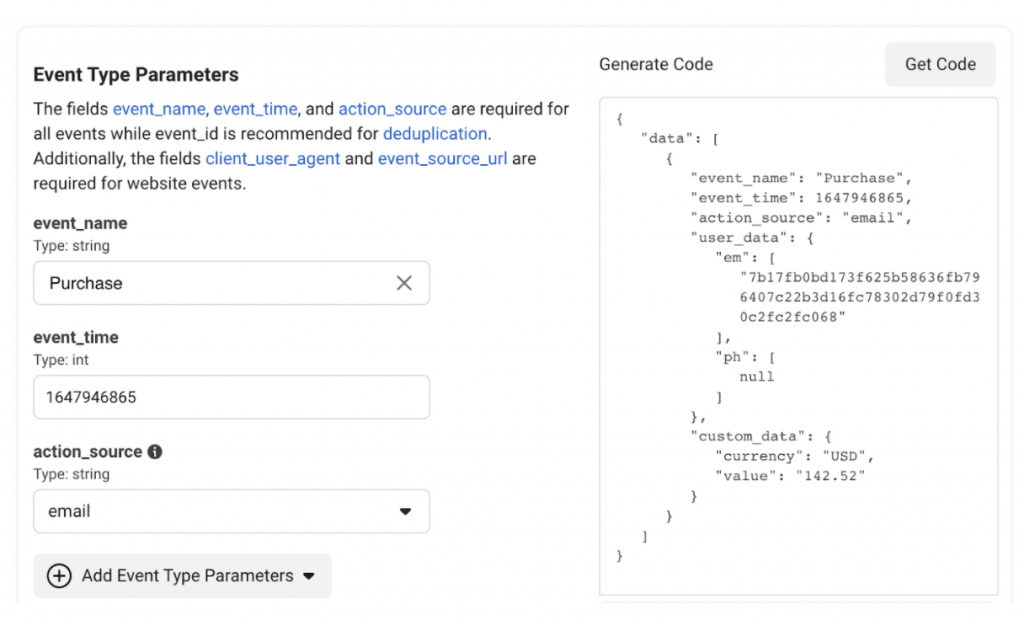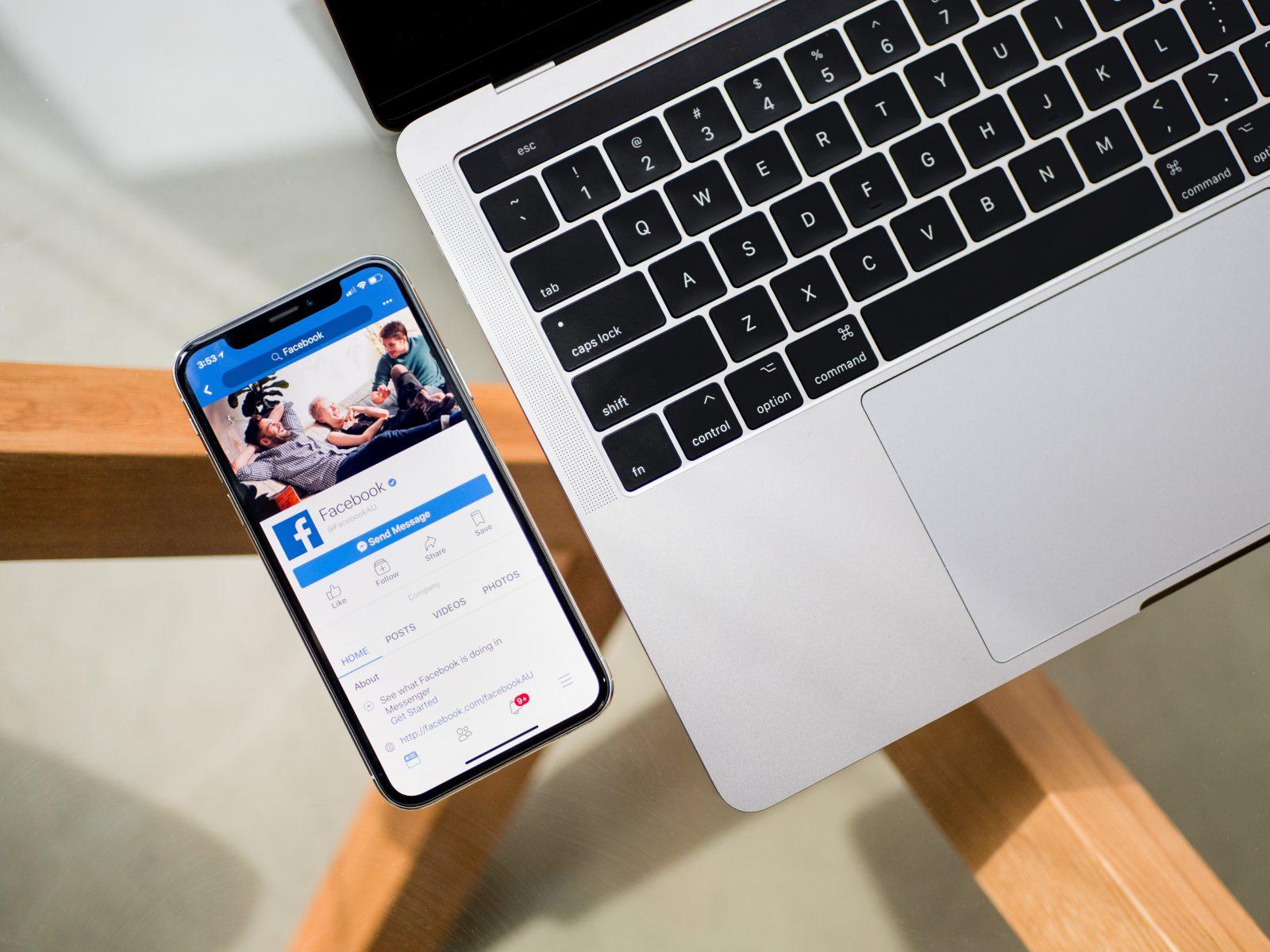We’re still implementing the Facebook Conversion API for lots of clients and learning about the best setup for different platforms. We’re updating this Facebook Conversion API guide as we learn more!
At Empower, we’ve talked a lot about the changes iOS14 is bringing to Facebook ads and how the Facebook Pixel is now less effective due to ad blockers and privacy features on Apple devices.
You can read our iOS14 and Facebook Ads: Impact summary and checklist for how to prepare for more of a background to this.
For lots of our nonprofit clients, they’ve been trying to figure out ways to keep as much conversion data as possible and to make that data as accurate as possible, now that they’re not able to rely on the Facebook Pixel.
Because that’s what we’re seeing in the Facebook Ads campaigns we run: lots of fluctuation in results and a mismatch in the data we see in Facebook and through organisations’ own websites and CRMs.
This is important: The more accurate your data is, the better Facebook will be able to optimise your ad campaigns for your desired result and the more accurate any Facebook ad campaigns you have running will perform.
How can you make sure your Facebook Ads data is as complete and accurate as possible.
That’s where Facebook’s Conversions API comes in.
Here we’ll go through what you need to know about Facebook Conversions API, its benefits, how to install it correctly and how to check the Facebook Conversions API is tracking conversions correctly.
In this article:
- What is the Facebook Conversions API?
- Benefits of Facebook’s Conversions API
- How the Facebook Conversions API works with your Facebook Pixel
- What kind of events can you track with the Facebook Conversions API?
- How to set up the Facebook Conversion API
- Testing you Facebook Conversion API setup
- Can you set up the Facebook Conversions API manually?
- What to do after you’ve setup the Facebook Conversions API
- Facebook Conversions API: Key Takeaways
- Further Reading on Facebook Conversions API
What is the Facebook Conversions API?
The Facebook Conversions API, formerly known as Facebook Server-Side API, allows advertisers to send web events from their servers to Facebook.
The Facebook Conversions API will help you push event and conversion data to Facebook Ads Manager while maintaining user privacy. That’s why there’s a lot of talk about Facebook Conversions API with Facebook ad changes due to iOS 14.
With Facebook Conversions API, you can send data you capture from your website backend (like WordPress for example) to Facebook Ads Manager.
This is similar to the Facebook Pixel. Place the pixel on your organisation’s website and Facebook tracks your event and conversion data, and then shows that data in Ads Manager.
So what’s the difference between the Facebook Pixel and Facebook’s Conversion API?
When you use the Facebook Pixel, it’s Facebook is the one doing the capturing and data collection. When you use the Facebook Conversions API, you collect the data through your website then share that data (customer id, order id, purchase events, etc) with Facebook.

Benefits of Facebook’s Conversions API
So what are the benefits of using Facebook’s Conversions API?
The Conversions API can help you to:
- Reduce your cost per result: When you use the Conversions API alongside the Facebook Pixel, it creates more reliable data which helps Facebook’s algorithm learn what works best and so reduce cost per action.
- Optimise ads for actions that happen on your website: By more accurately tracking events that take place off Facebook, this helps Facebook show your ads to audiences who are more likely to generate value for your organisation.
- Improve measurement: The Facebook Conversions API can help you better measure ad performance and attribution across your campaigns.
- Increase data control: When implemented separately from the Facebook Pixel, the Facebook Conversions API gives you more control over what data you share with Facebook and when you share it.
How the Facebook Conversions API works with your Facebook Pixel
The Facebook Conversions API is not a replacement for your Facebook Pixel nor is it the ultimate solution to keep everything as it once was before iOS 14. It’s here for you to use in parallel with your Facebook Pixel.
The Facebook Pixel allows Facebook to do two main things:
- Track and collect user activity and match it to a Facebook profile
- Measure events and conversions to track ad performance
Before all the changes with iOS14, this is all we had needed for the most part. The only major cause for reporting discrepancies from your CRM data and with Facebook’s data was due to ad blockers.
Now with tracking limits imposed by Apple and the necessary changes Facebook has to make to comply with iOS updates, there will be an even bigger gap in conversion data.
This is where Facebook Conversions API comes in. With data from the Facebook pixel and your “server” (such as your website and your CRM data), Facebook can improve reporting and measuring conversion events, giving you much more accurate data to work with.
What kind of events can you track with the Facebook Conversions API?
You can choose to track any of the events you’re already familiar with using the Facebook Conversions API.
For example, you can track content views, pageviews, newsletter signups, purchases and donations.
You’re probably already familiar with your most important events, but here’s what we recommend for nonprofits:
- Donations
- Purchases
- Page view
- Email sign up
With these core events at the minimum, you’ll be able to get the most out of Facebook Conversions API, with improved and more accurate ad reporting and management.
How to set up the Facebook Conversion API
Before getting started with the Facebook Conversions API, there are some things you need to do first:
- Installing the Facebook Pixel
- Using Facebook Business Manager.
Facebook has a number of partner integrations with various platforms you can use, which is by far the easiest way to implement it. Here’s how:
- Go to your Facebook Ads Manager
- Navigate to the “Events Manager” section
- Click settings. When you scroll down, you’ll see information about Facebook Conversions API
- Click “Choose a partner” in the integration settings
- Click the link for the platform your organisation uses and follow the guides.
Facebook has partner integrations with:
- Zapier
- WordPress
- WooCommerce
If you want to set up Conversions API through one of these platforms, Facebook has an automatic set up process for each one. Just follow the guide above and click the link for the platform your organisation uses.
Luckily, over 30% of websites are powered by WordPress, so setting the Facebook Conversion API up is as simple as installing the Facebook for WordPress plugin.
And if you don’t have WordPress, then Zapier has integrations with thousands of other websites, so following Zapier’s Facebook Conversion API setup guide should enable you to integrate with your organisation’s systems.
One more thing: It’s important you don’t have your Facebook Pixel duplicated on your website and triggering more than once for individual events. So if you have your Facebook Pixel hardcoded on your site, you’ll want to remove it.
Testing you Facebook Conversion API setup
Successfully followed the guide above? Nice work!
Now there’s two things to test to make sure the Facebook Conversion API is working correctly for your organisation.
1. Facebook Pixel Helper
Download the Facebook Pixel Helper browser extension for Chrome. Go to your site, click the Facebook Pixel Helper extension, and it will diagnose whether there are any issues with your Facebook Pixel implementation.
2. Payload Helper Tool
Test whether the data you’re sending through the Facebook Conversions API is correct by using Facebook’s Payload Helper tool. Just enter your Pixel ID in the “test this payload” box and click the “send to test events” button.

Can you set up the Facebook Conversions API manually?
If you want complete control of your Facebook Conversions API implementation or are using a platform without a native integration, you’ll have to resort to setting it up manually, which will require a degree of coding knowledge.
If you don’t have coding knowledge or access to a developer, first you should try what’s possible with Zapier’s Facebook Conversion integration, where you can “custom” integrate various other platforms without any coding. They also have a blog post with ideas for integrating the Conversions API with other platforms.
If you do go for a custom implementation, you’ll be able to own and have full control over the data you collect, which has the following benefits:
- Centralised place for all your tracking and data with less user privacy issues
- Protection with other platforms who in the future may suffer from the same tracking issues impacting Facebook
- First party tracking on your own subdomain to mitigate data loss from ad blockers
- Ability to setup automated error and data monitoring for all tracking
Learn how to set this up with Elevar’s guide.
What to do after you’ve setup the Facebook Conversions API
Implementing the Facebook Conversions API is just the first step toward server-side tracking.
There are a lot of benefits to server-side tracking and based on current privacy and data trends, we expect to see server-side tracking relied on a lot more.
Here’s what we recommend to do next:
- Test whether your Facebook Pixel is functioning correctly with Facebook’s Pixel Helper browser extension for Google Chrome
- Test your Conversions API implementation with Facebook’s Payload Helper
- After a week with your Conversions API implemented, monitor all your events’ deduplication and matching performance in Events Manager
Remember: The more accurate your data is, the better Facebook will be able to optimise your ad campaigns for your desired result and the more accurate any Facebook ad automations you have set up will perform, so it’s important to test that you’ve set up the Facebook Conversions API correctly.

Facebook Conversions API: Key Takeaways
- Install the Conversions API to get more accurate data: Using the Facebook Conversions API, you can gain back reported conversions for your Facebook ads your Facebook Pixel couldn’t capture
- Keep using the Facebook Pixel: It is not a replacement for your Facebook pixel, they should be ran in parallel
- The Conversions API helps Facebook’s optimisation algorithm: More conversion data using both Facebook Conversions API and the Pixel will help Facebook’s ad optimisation algorithm be more effective
- Use integrations if you can: Using the Facebook Conversions API is not difficult, especially if you’re using a platform with a direct integration, like WordPress
Further Reading on Facebook Conversions API
- About the Conversions API – General info
- Compare Conversions API Setup Options – Useful for your website team to see how best to integrate the API
- Best Practices for Privacy and Data Use for Facebook Business Tools – For any privacy / GDPR considerations
- Prepare Your Business to Use the Conversions API
- Best Practices for Conversions API




